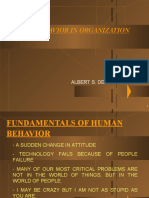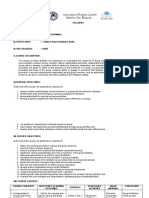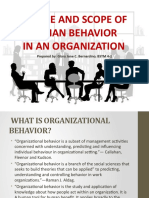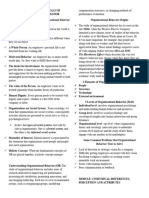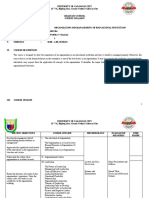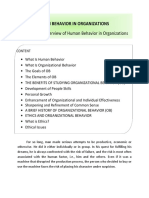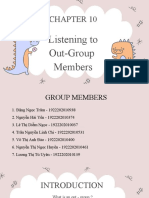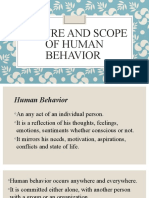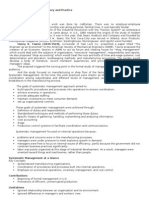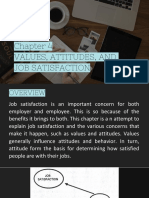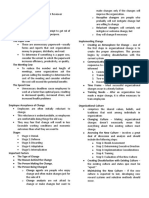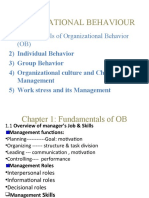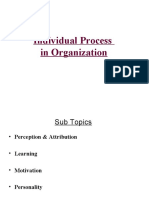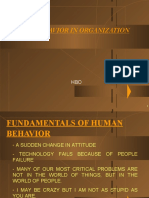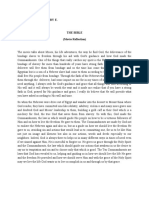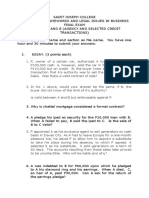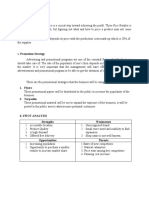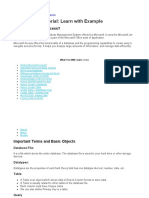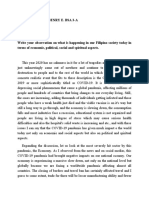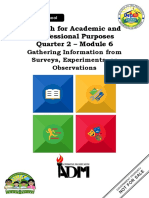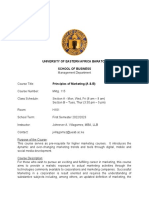0% found this document useful (0 votes)
200 views4 pagesFundamentals of Human Behavior 1
Organizational behavior is the study of how individuals and groups act within organizations. It examines how people interact and how the structure, technology, and environment of the organization impact behavior. Studying organizational behavior has benefits like developing people skills, personal growth, enhancing effectiveness, and refining common sense. Key concepts include that behavior is largely learned, humans adapt, and no two individuals are alike. Methods for studying human behavior include experiments, surveys, case studies, and more. Models for understanding it include individual-group-organization levels, an interdisciplinary approach, developmental stages, systems theory, and contingency based on unique situational factors.
Uploaded by
Coke Aidenry SaludoCopyright
© © All Rights Reserved
We take content rights seriously. If you suspect this is your content, claim it here.
Available Formats
Download as DOCX, PDF, TXT or read online on Scribd
0% found this document useful (0 votes)
200 views4 pagesFundamentals of Human Behavior 1
Organizational behavior is the study of how individuals and groups act within organizations. It examines how people interact and how the structure, technology, and environment of the organization impact behavior. Studying organizational behavior has benefits like developing people skills, personal growth, enhancing effectiveness, and refining common sense. Key concepts include that behavior is largely learned, humans adapt, and no two individuals are alike. Methods for studying human behavior include experiments, surveys, case studies, and more. Models for understanding it include individual-group-organization levels, an interdisciplinary approach, developmental stages, systems theory, and contingency based on unique situational factors.
Uploaded by
Coke Aidenry SaludoCopyright
© © All Rights Reserved
We take content rights seriously. If you suspect this is your content, claim it here.
Available Formats
Download as DOCX, PDF, TXT or read online on Scribd
/ 4

